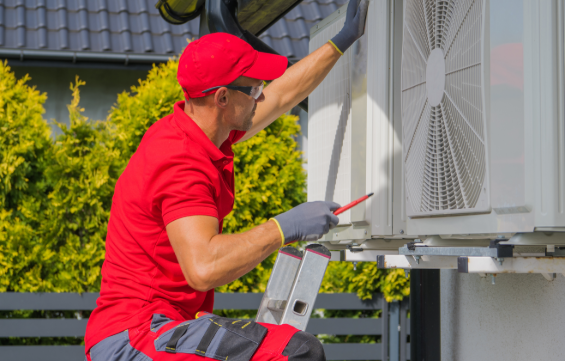5 Climate Upgrades Every Old House Needs for Better Air Quality
Older homes possess a unique charm and character that newer houses often lack. However, these seasoned structures can also come with their own set of challenges, especially when it comes to indoor air quality. Decades of use, outdated building materials, and the natural settling of a house can contribute to a less-than-healthy indoor environment.
Fortunately, with a few climate upgrades, you can significantly improve the air you and your family breathe. These modernizations not only enhance your home's air quality but also contribute to a more comfortable and energy-efficient living space. Let’s dive into them!
Seal a Leaky Building Envelope
One of the most effective ways to improve indoor air quality in an older home is by sealing its envelope. Over time, gaps and cracks can develop around windows, doors, and through walls and foundations. These openings allow outdoor pollutants, such as pollen, dust, and other allergens, to infiltrate your home. A leaky envelope also leads to energy loss, as heated or cooled air escapes, forcing your HVAC system to work harder.
To address your home’s leaky envelope, meticulously caulk windows, weatherstrip doors, and seal any visible cracks, you create a barrier against these unwanted airborne particles. This simple yet crucial step can lead to a noticeable improvement in your home's air and a reduction in your energy bills.
Introduce a Balanced Ventilation System
While sealing your home is important, proper ventilation is equally critical to prevent the buildup of indoor pollutants. Many older homes were not designed with modern ventilation strategies in mind, often relying on natural (and unpredictable) air leaks. A dedicated ventilation system ensures a consistent exchange of stale indoor air with fresh outdoor air.
Look for ventilation options, such as a Heat Recovery Ventilator (HRV) or an Energy Recovery Ventilator (ERV), which are ideal for older homes. These systems not only supply fresh air but also precondition it, using the temperature of the outgoing air to heat or cool the incoming air. This process provides superior ventilation without the energy penalty, ensuring your home breathes correctly and maintains healthy air year-round.
Replace Your Current HVAC System With a Modern Unit
The heating, ventilation, and air conditioning (HVAC) system is the heart of your home's climate control and plays a pivotal role in indoor air quality. Older HVAC systems are often inefficient and may not have the advanced filtration capabilities of modern units. Upgrading to a new, energy-efficient HVAC system can dramatically improve air circulation and filtration. Modern systems are designed to remove a wide range of airborne contaminants, providing cleaner, healthier air throughout your home.
When considering an HVAC upgrade, it's essential to consult with experts who can assess your home's specific needs. For a significant undertaking such as this, relying on HVAC replacement experts, like Trane South, can ensure the replacement job is done right. Experienced technicians can help you select the perfect system for your older home, guaranteeing optimal performance and improved air quality. A professional installation is also key to maximizing the benefits of your new system for years to come.
Install a Whole-Home Air Purification System
For the ultimate in clean air, consider a whole-home air purification system. Unlike portable units that only address a single room, a whole-home system integrates directly with your HVAC system to purify the air in every corner of your house. These systems can capture a remarkable percentage of airborne particles, including microscopic allergens, bacteria, and viruses. Some advanced systems even neutralize odors and volatile organic compounds (VOCs) that can off-gas from old building materials and furniture.
Air purification systems integrated and installed by professionals, such as Premier Heating and Air, help effectively absorb and remove airborne pollutants in your home. Specialists can guide you through the available options and expertly install a system that meets your family’s specific health needs. With a professionally installed air purification system, you can be confident that you are providing the cleanest possible air for your loved ones.
Utilize High-Efficiency Particulate Air (HEPA) Filters
A simple yet highly effective upgrade for any forced-air HVAC system is the use of High-Efficiency Particulate Air (HEPA) filters. These filters are engineered to capture at least 99.97% of airborne particles as small as 0.3 microns. This includes common irritants found in older homes like dust mites, mold spores, pet dander, and pollen. By trapping these fine particles, HEPA filters prevent them from circulating throughout your living spaces.
In addition, regularly replacing your standard HVAC filters with high-quality HEPA filters can make a significant difference in your indoor air quality, especially for family members with allergies or asthma. It’s a small change that delivers a substantial improvement in the health of your home environment.
By investing in these climate upgrades, you can transform your older house into a healthier, more comfortable, and energy-efficient home. Breathing clean air is fundamental to your well-being, and taking these steps will ensure that your charming older home provides the best possible environment for you and your family for years to come!


